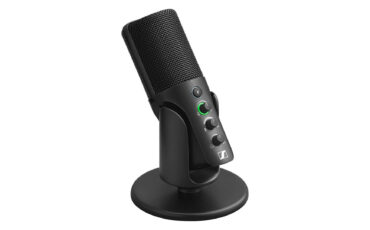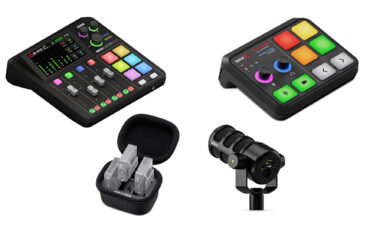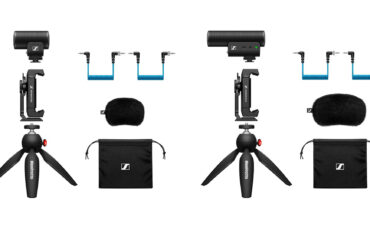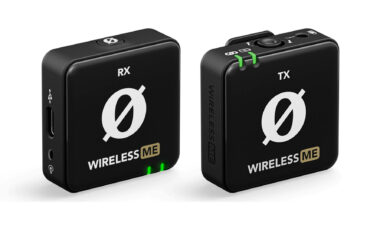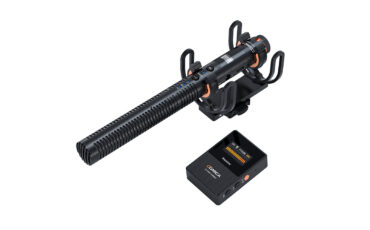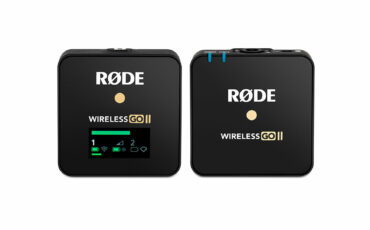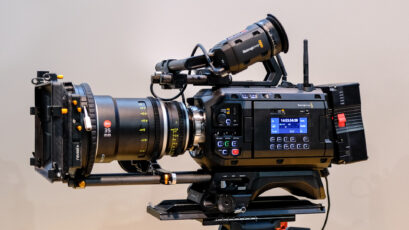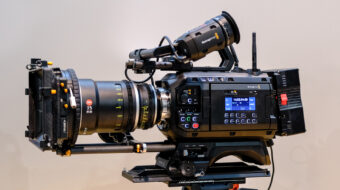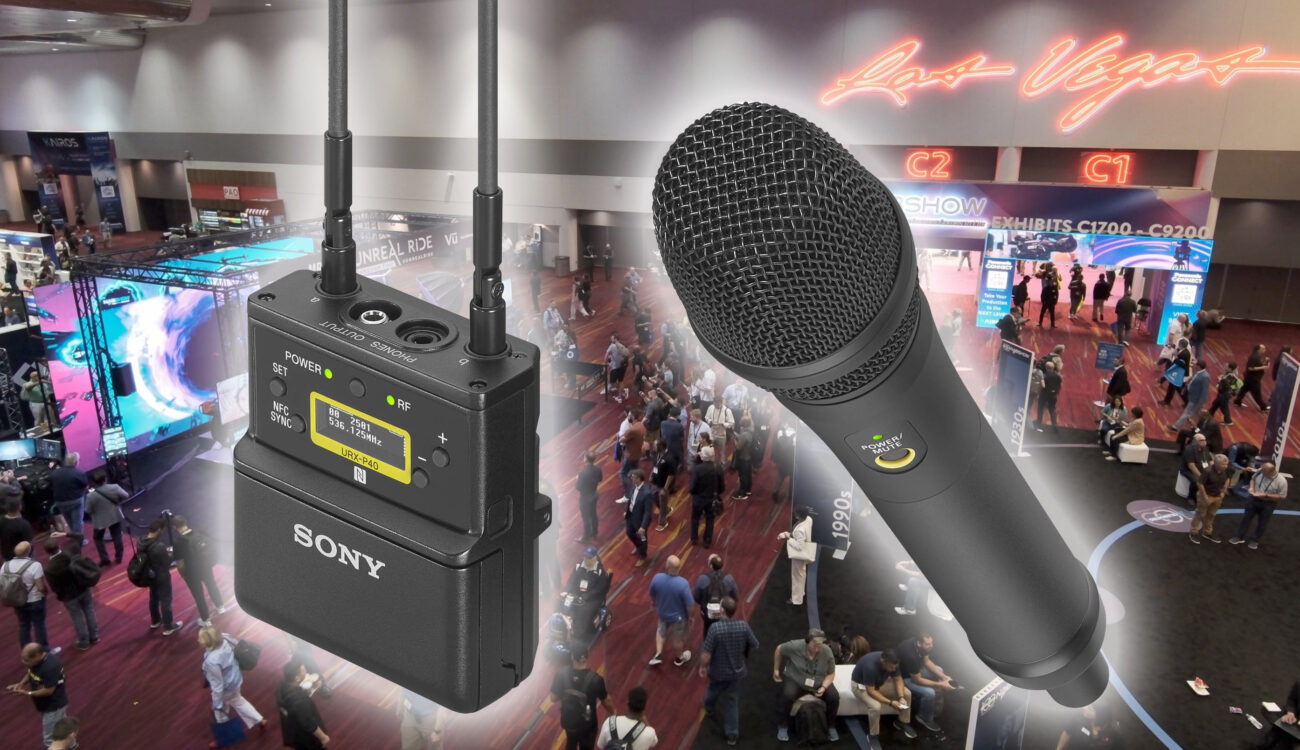
In case you wondered why our NAB and Cine Gear videos sounded so good this year: we finally found the perfect microphone solution for good audio in noisy environments, and it comes from Sony. This is a shameless plug because we were so happy with the Sony UWP-D22 microphone sets.
We’ve covered trade shows for way over a decade – actually, we started around 2008. Shooting interviews about new products on the show floor always proved difficult on various levels: Hoards of people walking through your image on crowded show floors, mixed lighting conditions, and a lot of light pollution from other booths that are often demo-ing lighting equipment.
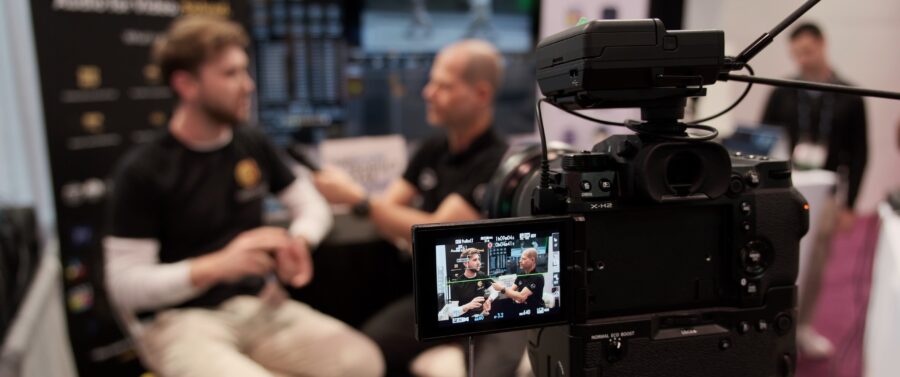
Trade shows = audio recording problems
On the audio side, we often had even worse problems in the past: lots of surrounding noise from people talking next to you, the occasional music in the background, and often wireless connectivity issues because of Wifi and general airwave congestion – which, by the way, is the worst, because you will literally be stuck with no usable audio unless you brought another wireless solution that works on other frequency bands, or simply a wired microphone solution.
The main choice for show floor videos: hand mics
We generally use hand mics for gear interviews on the show floor. They are easy and flexible when we are moving from booth to booth shooting videos about new gear. Generally, they pick up less surrounding noise than lavalier mics.
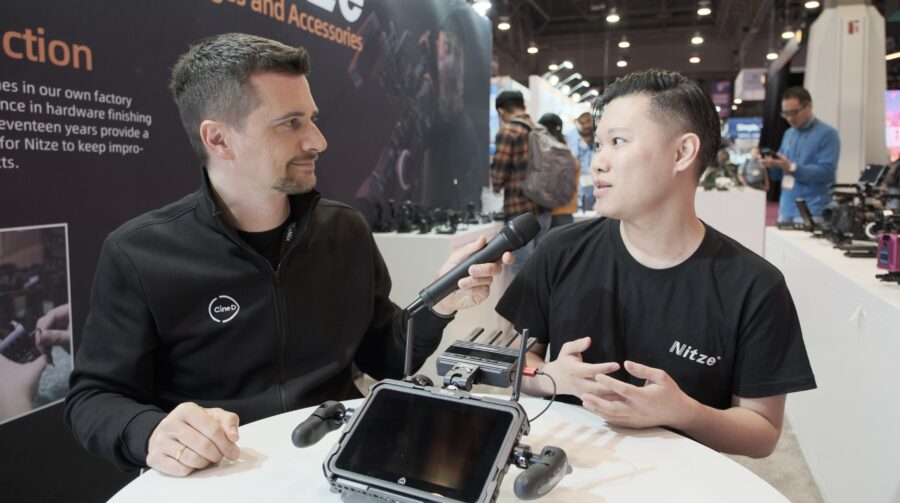
Sony UWP-D22 microphone provided much better audio quality
So, after our long odyssey with wireless handheld microphone solutions from different manufacturers over the years, which “kind of” worked but with mediocre audio quality, background noise, and interference, we recently tested Sony’s UWP-D22 wireless handheld microphone. We were stunned by the exceptional audio quality it delivered, so we contacted Sony to loan us two sets for our NAB 2023 coverage. It proved to be the best decision.
It almost didn’t matter where we were standing doing interviews, the audio always sounded great. I’m not a sound or audio expert, but as a DP I have to say that it sounded quite dry, almost studio-like, and clearly optimized for voice recordings while shutting out surrounding noise that was not in the vicinity of the hand mic. It’s not a close mic, so you don’t have to hold it super close to your mouth or nearly press it against your lips, which is also very unhygienic when interviewing various people throughout the day. When we held it at a standard distance, the Sony UWP-D22 worked flawlessly, making it absolutely ideal for our specific use case.
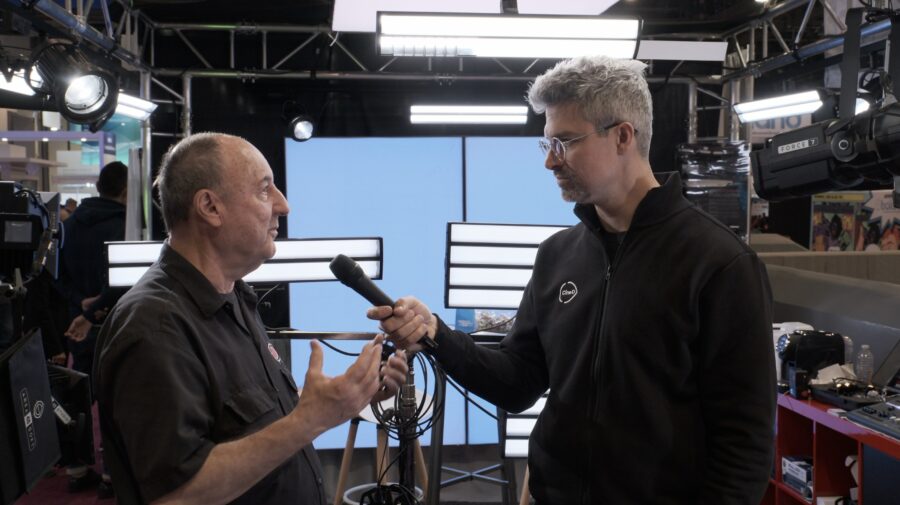
Wireless connection with Sony cameras, one receiver for two senders with the UWP-D27
We also had the set with two wireless lavalier mics and transmitters (Sony UWP-D27), which we only used once or twice for sit-down interviews. It’s super convenient that there is only one receiver for two lavs, which of course makes it easy to work with mirrorless cameras, mounting the receiver on top and connecting it straight to the camera with a mini jack cable.
At this year’s NAB, we were working with FUJIFILM cameras because we used their camera-to-cloud workflow (watch our behind-the-scenes documentary about that here in case you haven’t seen it yet). But if you are using a Sony Alpha or FX-series camera, the smart hotshoe connection eliminates the need for a cable. Simply plug the Sony UWP-D22 receiver into the camera’s top, and you’ll have a seamless audio connection between the receiver and the camera.
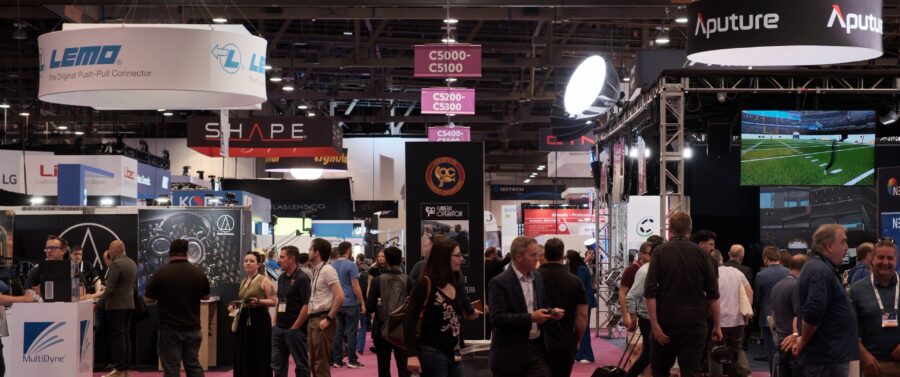
Almost no interference
We never had any interference issues the Sony UWP-D22 microphones on the show floor, which is a rarity. With so many devices transmitting on various wavelengths across the entire Las Vegas Convention Center during NAB, it means there are a few dropouts every now and then. We didn’t experience it in any of the halls where all the booths and most of the people were. We ran into an issue only once, inside the press room. We realized that one of our two UWP-D22 sets caused interference with the other set when the second one was turned on while the first one was already in operation. Shutting one of them off solved the problem immediately, but it’s something to be aware of. I’m sure it is possible to avoid the situation by manually choosing the frequency instead, but we didn’t dive into that.
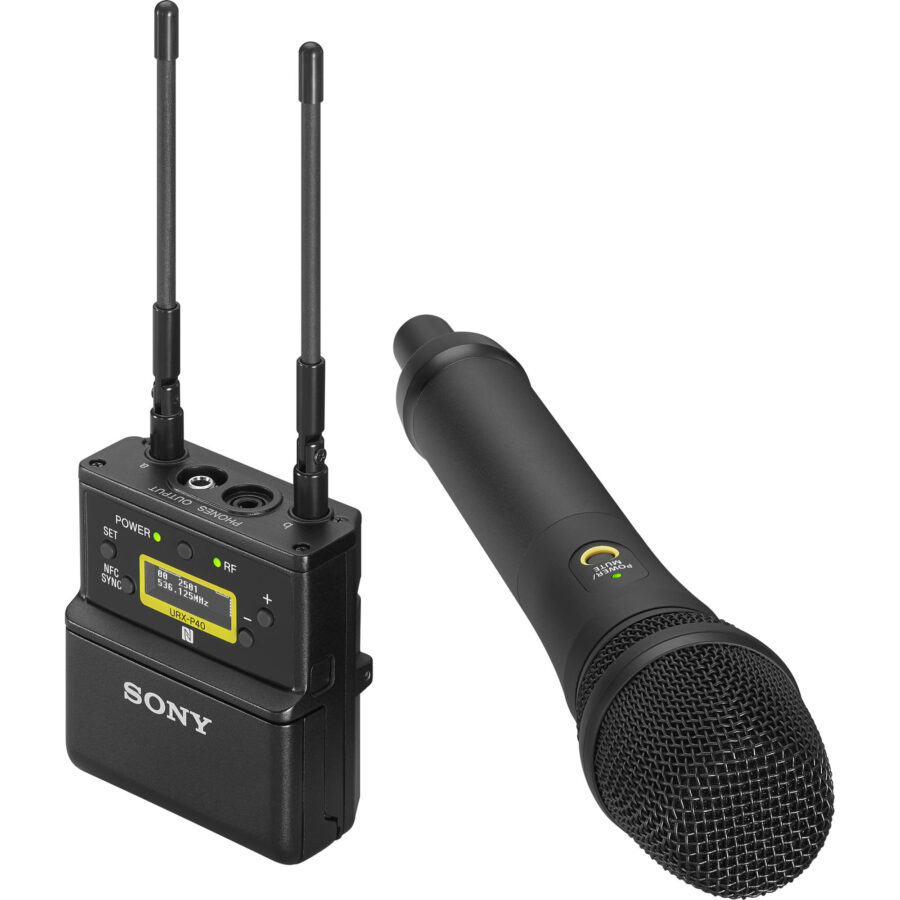
Battery hungry solution
If there is one small downside to the Sony UWP-D22 microphone system, it’s that they are relatively power-hungry. Be aware that you should take enough replacement AA batteries with you on a shoot when using this system. However, rechargeable AA batteries work really well with it, if you want to be more environmentally-conscious. In general, I am also quite happy they don’t use a proprietary battery solution for the UWP-D22 system. It means that it’s super flexible and is immediately ready to operate continuously anywhere in the world, independent of any AC power connections.
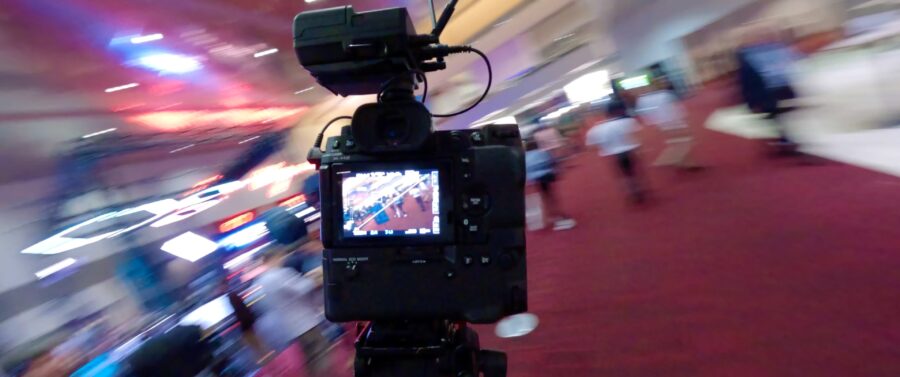
Audio problem for future trade shows solved
In conclusion, the Sony UWP-D22 will remain our reliable go-to solution for any future trade shows. We like the quality of the sound in comparison to all other solutions we tested – it’s clear, voices sound exceptionally full, surrounding noise is cancelled out well, and the wireless connection is robust and relatively interference-free.
What is the wireless audio solution of your choice that you trust? And why? Let us know in the comments below.
